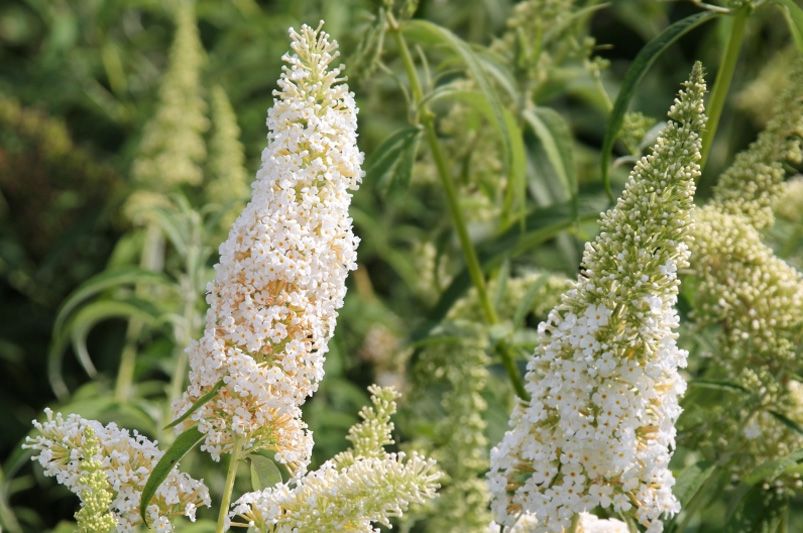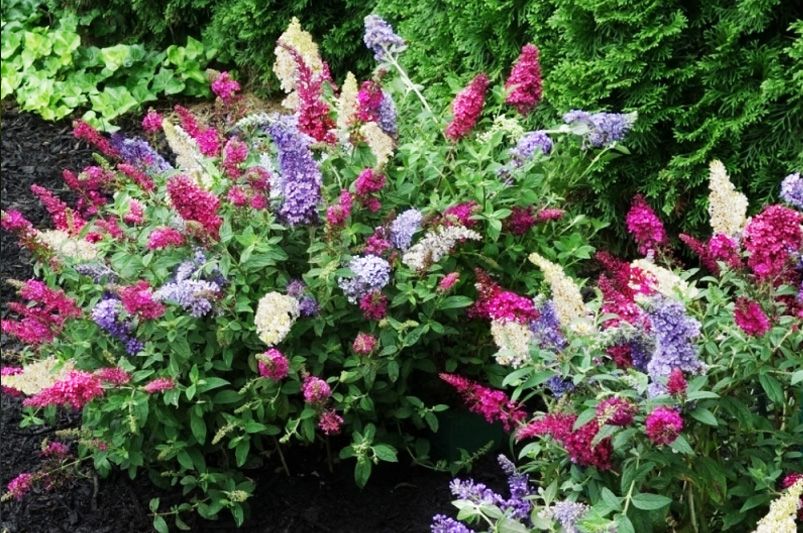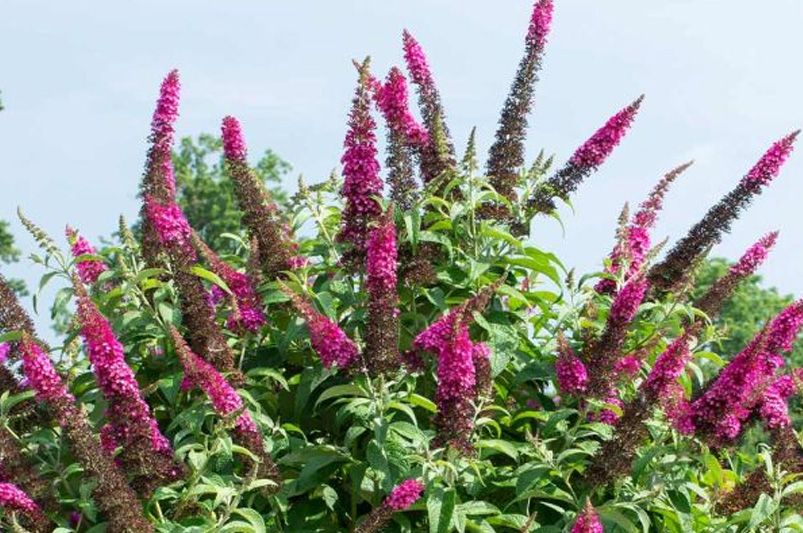
The Ultimate Guide to Buddleias: Plant, Grow, and Care
Published: 01/10/2024 | Updated: 16/04/2025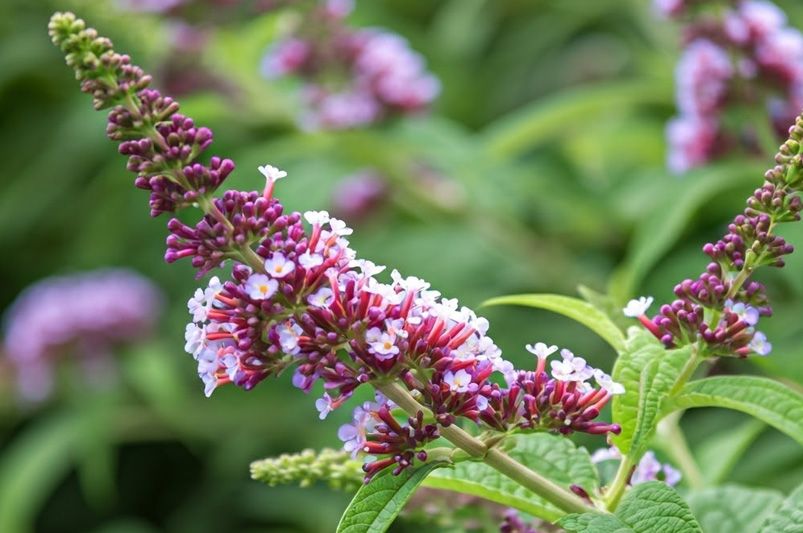
Key Highlights
- Buddleias, also known as butterfly bushes, are known for attracting pollinators with their fragrant, colorful blooms.
- Plant in a sunny location with well-drained soil for optimal growth.
- These shrubs require minimal care once established, only needing regular watering and occasional pruning.
- Be mindful of their invasive potential in certain regions and consider sterile varieties.
- Deadhead spent flowers to encourage continuous blooming and prevent unwanted spreading.
Introduction
Buddleias, commonly known as butterfly bushes, are a favorite among gardeners for good reason. Their vibrant flowers not only add a splash of color to any garden but also attract butterflies and other pollinators, making them a vital addition to any landscape. This comprehensive guide is designed to assist everyone, from seasoned horticulturists to enthusiastic beginners.


Inside, you'll find all the essential information needed to successfully plant, cultivate, and care for these stunning shrubs. We’ll cover everything from choosing the right variety and planting techniques to optimal watering and pruning practices. With this guide, you’ll be equipped to create a flourishing Buddleia garden that will thrive and enchant both you and your local wildlife. Get ready to transform your outdoor space into a colorful haven that celebrates nature!
Varieties of Buddleias
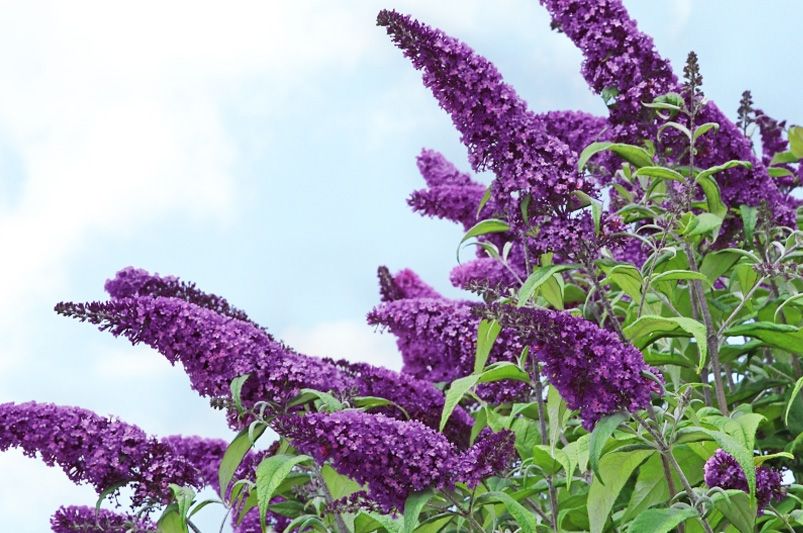
Buddleia 'Black Knight'
The Black Knight Buddleia is a sought-after deciduous shrub, celebrated for its striking dark purple flowers that bloom in mid-summer, drawing in butterflies and hummingbirds alike. This fast-growing variety can reach impressive heights and widths of up to 10 feet, making it a standout feature in any garden.
Thriving in full sun and well-draining soil, the Black Knight is remarkably easy to care for, making it an excellent choice for both novice and experienced gardeners. Its hardiness and resilience make it a dependable option for those looking to attract pollinators while adding a burst of vibrant color to their landscape. With its enchanting blooms and ability to support local wildlife, the Black Knight Buddleia is sure to enhance the beauty and biodiversity of your outdoor space.
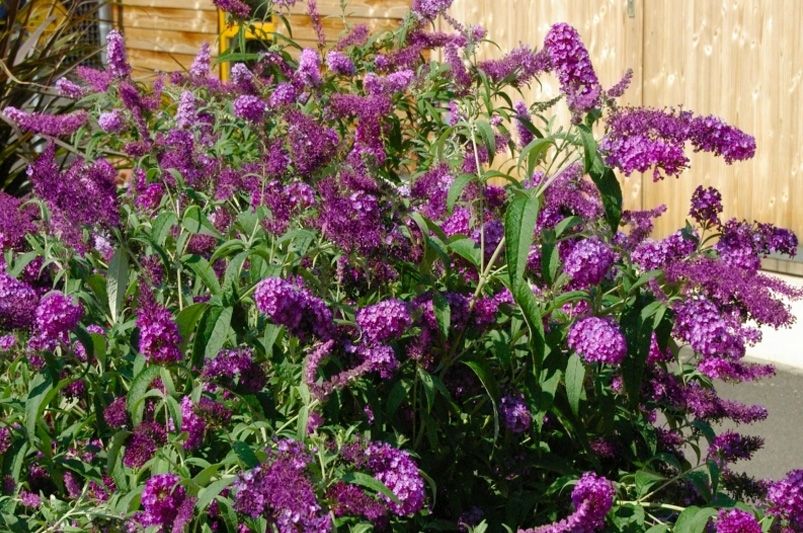
Buddelia 'Nanho Purple'
Essential Care for Buddleias
Buddleias are easy-to-care-for garden plants. This makes them popular among gardeners of all skill levels. A few simple care tips can help them grow and give you lots of beautiful flowers.
First, always plant your Buddleia in a spot that gets plenty of sunlight during the day. These plants love full sun and will bloom best when they receive it. Second, make sure the soil drains well. Buddleias do not like wet soil and can get root rot if they sit in it.
Ideal Soil Conditions for Thriving Buddleias
Buddleias can grow well in many types of soil, but they prefer well-drained soil. When you plant them, it is a good idea to mix in organic matter, like compost, to improve how water flows through the soil. Buddleias come from areas with rocky or sandy soil. They can handle poor soil, but not too much.
Heavy clay soil can be a problem because it holds too much water and may cause root rot. To help this, you can plant your Buddleia on a small mound or in a raised bed. This helps rainwater run away from the roots.
Putting a layer of mulch around the plant, without touching the main stem, can keep moisture in. It also helps control the temperature of the soil. Keeping the soil well-drained is important to avoid root rot and to keep your Buddleia healthy and strong.
Sunlight and Watering Needs
Buddleias grow best in full sun. They need at least six hours of direct sunlight every day. This sunlight is important for them to grow healthy and have many flowers. If you plant your Buddleia in a shady spot, it may grow longer stems, have fewer flowers, and be more likely to get sick.
Watering properly is also very important. Buddleias can handle dry conditions once they are established, but they still need regular moisture, especially when it's dry. Try to keep the soil moist but not too wet. Watering too much can damage the roots and cause root rot.
A good way to know when to water is to check the soil. If the top inch feels dry, it's time to water your Buddleia deeply. Water it well but not too often. This helps the roots grow deeper, making the plant stronger.
Planting Your Buddleia
Planting your Buddleia the right way is very important for it to grow well in its new place. Before you plant, find a good spot with the right conditions for strong growth.
Look for a place that gets plenty of sunlight and has soil that drains well. This will help stop water from building up and causing root rot. Also, think about how big your Buddleia will get when it's fully grown. Make sure there is enough space for it to expand without being squeezed in.
Choosing the Right Spot in Your Garden
Choosing the right place for your Buddleia is very important. It affects both its health and the look of your garden. Buddleia plants grow best in sunny spots that are well-drained. In North America, the southern and western areas often provide the best conditions.
When picking a location, focus on areas that get at least six hours of full sun each day. Buddleias can handle some shade, but they will have the brightest flowers when they are in the sun. Not enough sunlight can cause weak growth and fewer blooms. It can also make them more likely to get sick.
Also, think about how big the Buddleia type will grow. Make sure there is enough space for your Buddleia to thrive without crowding other plants. Having enough space helps air circulate, which is important for stopping fungus.
Step-by-Step Planting Guide
Planting your Buddleia the right way is very important for its growth. Follow these steps to plant it well:
- Prepare the planting hole: Dig a hole that is twice as wide and as deep as the root ball of your Buddleia. This gives the roots enough space to spread out and grow.
- Amend the soil: If your soil is heavy with clay or does not have enough organic matter, mix in compost or other organic items. This will help improve drainage and soil health.
- Position the plant: Carefully take the Buddleia out of its container. Loosen any roots that are circling the ball. Place the root ball in the hole, making sure it is level with the soil surface.
Finally, fill the hole with the improved soil. Firm it gently around the roots to get rid of any air pockets. Water your newly planted Buddleia well. This helps settle the soil and reduces the shock from moving it. Finally, adding a layer of mulch around the base of the plant can keep moisture in and help stop weeds from growing.
Pruning and Maintenance Tips
Buddleias grow quickly, so they need regular pruning to keep their shape and grow bushier. When you prune correctly, it makes the plant look nicer and helps it bloom more.
Regular pruning also stops the Buddleia from becoming tall and floppy. This way, there is less chance of the stems breaking, especially when it is windy. It’s important to prune at the right time so you do not cut off the flower buds that are just starting to form.
When and How to Prune Buddleias
Knowing when and how to prune your Buddleias is very important. It can help their health, shape, and how many flowers they grow. One key practice is deadheading. This means taking off spent flower heads.
Deadheading helps keep the plant tidy. It also encourages more flowers to grow. This way, the plant does not waste energy on making seeds. In late summer, as the flowers start to fade, deadheading is especially important. It can help stop seeds from spreading, which is crucial for invasive plants.
For more serious pruning, wait until late winter or early spring. Do this before new growth starts. Cut back last year's stems to just a few inches above the main trunk or older wood. This strong pruning encourages lively growth from the base. It will lead to a bushier and more compact plant.
Keeping Your Buddleia Healthy Through the Seasons
To keep your Buddleia healthy every year, give it the right care as the seasons change. In spring, when you see new growth, spread a thin layer of compost or well-rotted manure at the base of the plant. This will give it the nutrients it needs as it wakes up from winter.
During the summer, watch for any pests or diseases. Buddleias are mostly pest-free, but checking often helps you fix any problems quickly. If you live in warmer climates, you may need to water it extra during dry spells.
As autumn comes, water less often. Let the soil dry out a little between waterings. This helps the plant get ready for winter. In late fall, adding mulch around the base will protect the roots from frost. Just remember not to pile the mulch against the stem of the plant.
Conclusion
In summary, learning how to plant, grow, and care for Buddleias can change your garden into a lively place. Knowing the best soil, sunlight needs, and how to prune correctly is important for growing healthy Buddleias. Whether you are an expert gardener or just starting out, this guide gives you the tools to help your Buddleias bloom. So, get ready to work, get your hands dirty, and enjoy these lovely plants as they blossom. For more gardening tips and ideas, remember to share this guide on social media!
Frequently Asked Questions
What is the Best Time to Plant Buddleias?
For many areas in the United States, the best time to plant Buddleias is early spring, once the last frost is gone. This timing gives the roots enough chance to grow before summer's heat arrives. Gardeners in warmer climates with mild winters may also choose to plant Buddleias in late winter.
How Often Should Buddleias be Watered?
Buddleias, or summer lilac, can handle dry conditions well once they are fully grown. However, they still need regular watering, especially during dry times and when they are in full sun. Try to keep the soil moist, but not soaked.
Can Buddleias Grow in Pots?
Are Buddleias Resistant to Pests and Diseases?
Buddleias usually resist pests well and do not get sick often. Still, they might face some problems, like spider mites, powdery mildew, or root rot. It is important to take care of your plants in the right way to help prevent these diseases.



